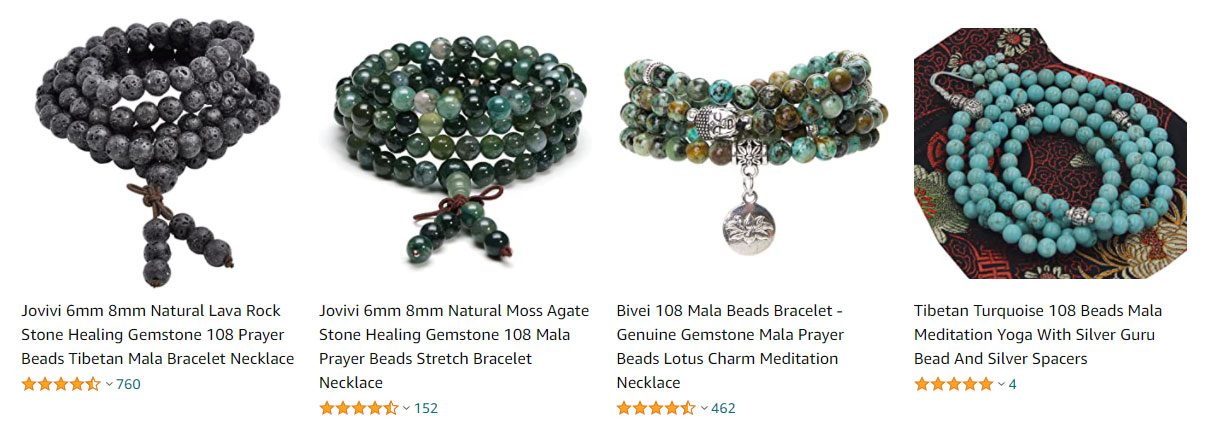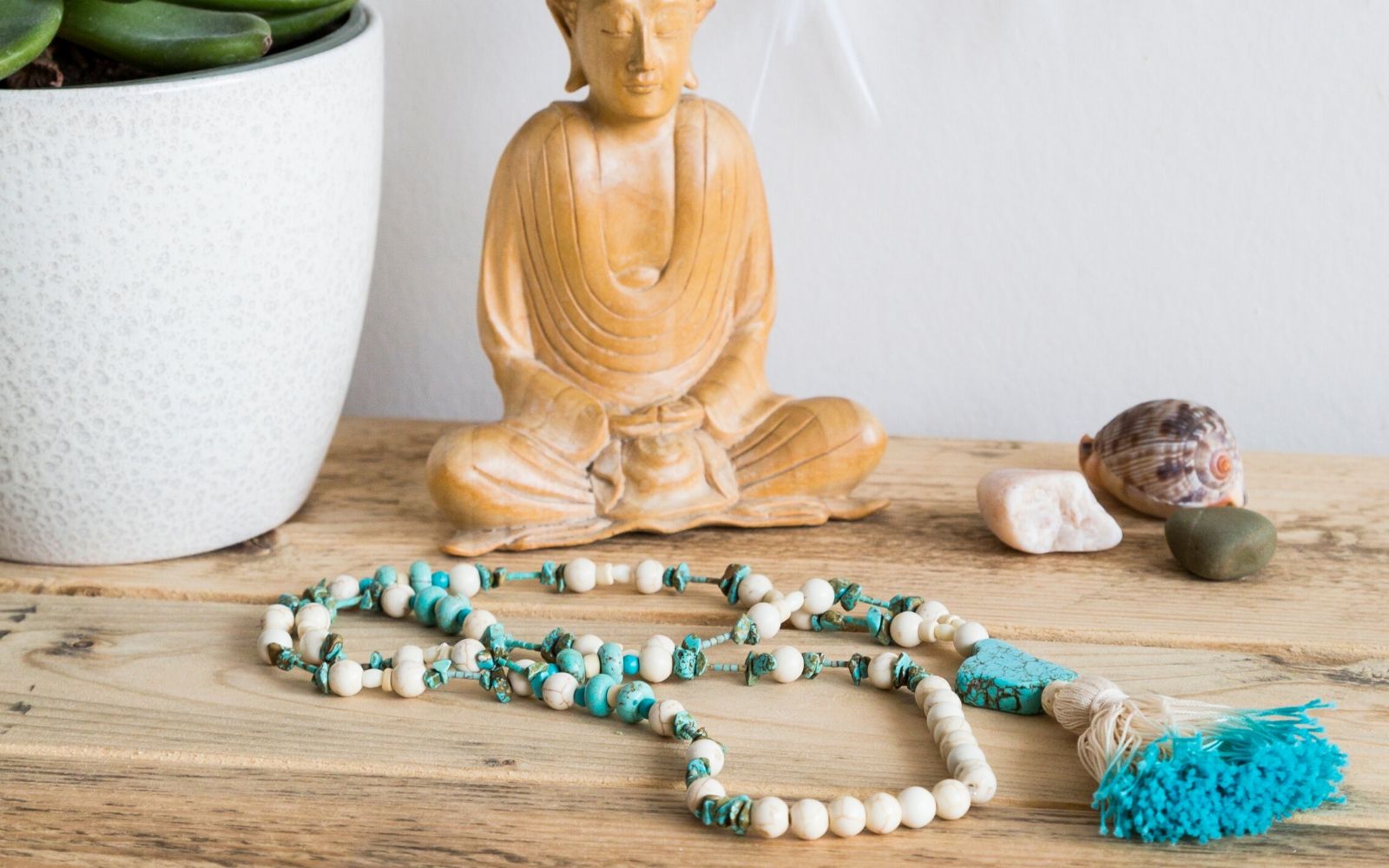Buddhist mala meditation bracelets
Every religion has rituals that we readily admit to without always understanding and the use of the Mala bracelet is one of them. This bracelet has existed for centuries and its use has spread over time, even among non-believers. In fact, the Mala bracelet has a special meaning, and there are several categories, each with a special purpose. And before talking in depth about the 108 beads mala bracelet, is necessary to have an overview of its origin, its meaning and its various uses. And after knowing these various aspects, one should be able to choose his own Buddhist bracelet.
WHAT IS A BUDDHIST BRACELET?
The term "mala" is of Sanskrit origin and means "meditation garland" or "garland of beads". Indeed, the meaning of its translation comes from its utility. In some spiritual movements, the Tibetan or Buddhist mala bracelet is worn like a rosary.
To this day, there is little reliable information about the history of the Mala bracelet. However, historians estimate its origin to be over 3000 years old. Created in India, this accessory is at the heart of the Buddhist and Hindu tradition. It is used during prayer or meditation and the number of beads it contains is not insignificant. Therefore, the constitution of a Mala bracelet with 108 beads is based on certain beliefs.
It is an object that is traditionally worn around the neck, but over time, followers began to put it on the wrist, hence the birth of the mala "bracelet". Originally this necklace or rosary has no less than 108 beads. And it is only to make them easy to wear around the wrist that manufacturers began to make them with a smaller number of beads, about twenty on average.
So Hindu and Buddhist Indians took the habit of wrapping their malas around their wrists and they were not the only ones. Tibetans have also been in the habit of wearing bracelets, necklaces and other trinkets for ages. That's why Buddhist bracelets are also called Tibetan bracelets.
Tibetan monks who live in remote areas of the world are known to follow Buddhist precepts and values. All of their jewelry is not meant to embellish their outfits, but rather reflect an art of living. And if these jewels have been exported a little, it is naturally due to their authenticity and their simple beauty. They began to appear in Asian countries and later in the West.
And in modern societies, Mala bracelets are now of great interest. For example, they contrast very well with the fashion of clothing and bring a change of scenery and color to the outfits.
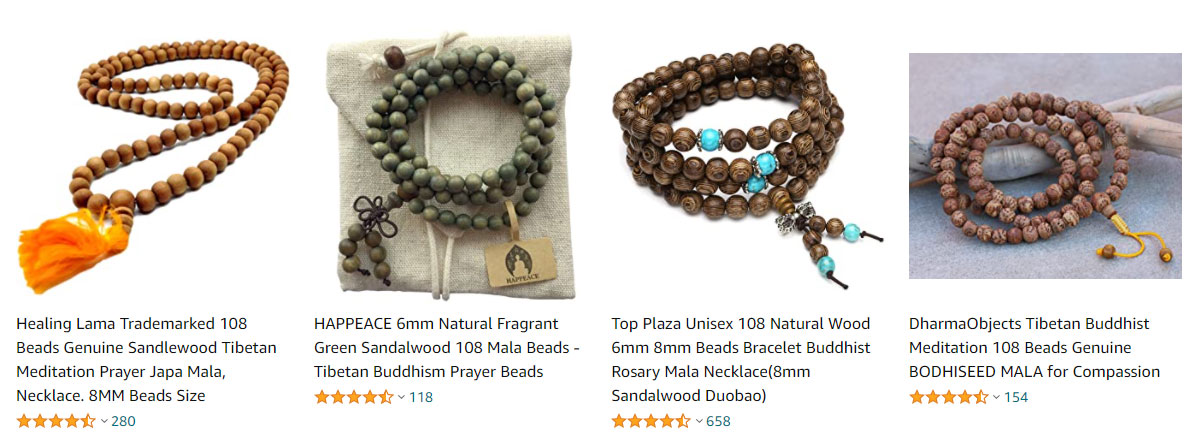
USE OF A BUDDHIST BRACELET
The mala is used to recite prayers or count mantras. In general, it is strung with the index finger and the thumb of the right hand while holding it with the left hand. This mechanism is done from outside to inside, that is to say towards oneself. This means that we are removing people from suffering and karma in return is favorable to us and shows compassion. Generally speaking, it is a bracelet that represents positive emotions and is used by non-believers as well as believers.
The beads also help with breathing techniques. And depending on their nature, they can give direction to the prayer or intensify it. For example, the Mala bracelet made of bell crystal would allow to find a lost object, human being or animal. The use of these bracelets can be extended to purposes such as lithotherapy.
Indeed, when the beads of a Tibetan bracelet are made of stones, it can contribute to improve your well-being. The energies they provide can be physical or psychological. To do this, you just have to wear them regularly on your skin. It is also important to recharge them daily and to purify them.
During meditation sessions, the Tibetan Mala bracelet can be used to give a more objective duration to the sessions. You will also be able to work on your concentration and your patience which are very useful vests in meditation. These are two important qualities in your spiritual and personal development.
On the other hand, by practicing yoga with a Mala bracelet, you will more quickly reach the state of serenity. Because, as in the case of meditation, it allows you to forget everything that surrounds you. It is a material that reminds you of the essential in all circumstances.
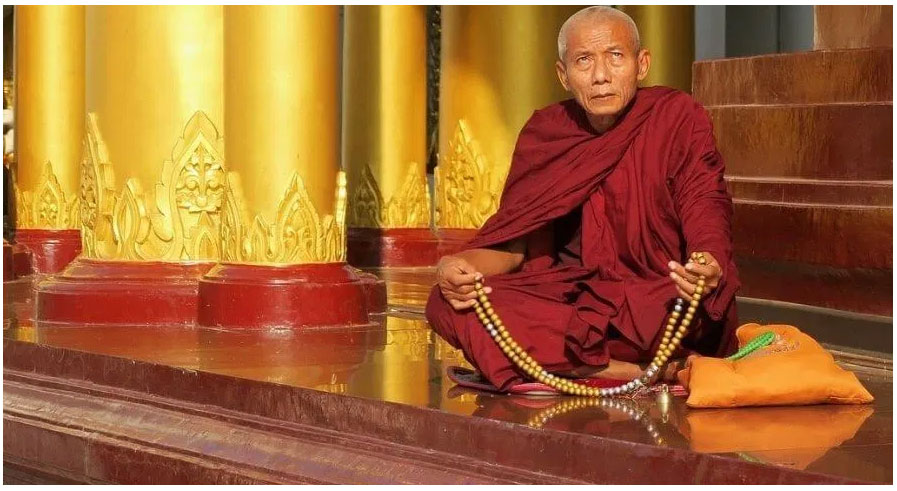
THE DIFFERENT PARTS OF THE MALA BRACELET
The Mala bracelet is an object that has many secrets hidden in its different parts. To begin with, the conical clasp of this bracelet represents emptiness. In the Buddhist tradition, this is the non-existence of all essence. This is equivalent to saying that in its functions, everything is devoid of autonomous existence. The cord for its part is theoretically composed of several threads tied in braids, each with a specific symbol.
Three of them symbolize the different bodies of the Buddha: the absolute body, the body of glory and the body of emanation. The other 5 represent the different wisdoms or families of Buddha. And the 9 remaining ones symbolize the primordial Buddha Vajradhara. And finally, when the counter ends with a dordje, it represents compassion and skill. While the bell symbolizes emptiness and knowledge.
MEANING OF THE 108 BEADS OF THE BUDDHIST BRACELET
The meanings of the Mala bracelet vary according to its use and religions. The 108 beads of this bracelet symbolize, among other things, the Taichi positions, the various names of the Buddha and the number of trials he went through to reach enlightenment. This number is also related to the different yoga positions, the names of some Hindu gods and goddesses and the 108 sins to fight and clothe to cultivate.
In Japan too, 108 fires are lit during the ceremony of the cult of the dead and at Mount Hiei near Kyoto, there are 108 outdoor tombs. Most of the malas that are currently being made no longer follow the recommendations for threads. Normally, 17 threads should be used in total.
In addition to the 108 beads, the Mayan bracelet has one bead larger than all the others called "Meru". The latter is a tribute to the mount of the universe whose name it bears. This bead also represents wisdom and the realization of absolute emptiness. The beads can be made of natural stones or wood.
A mala symbolizes strength, healing, harmony, stability and many other things depending on the stones that are used. And according to some beliefs, you don't choose a mala, on the contrary, it chooses you according to your needs. And apart from religion, it calms the mind, body and spirit of the wearer. However, the variety of colors can make you want to make a choice anyway.

HOW TO CHOOSE A MALA BRACELET ?
Actually, there is no right or wrong way to choose a Tibetan bracelet. As you know, each of them has a particular meaning and it also depends on where you find them. Intuition also has an important role to play, as you will naturally be drawn to a bracelet that seems right for you rather than another.
Otherwise, you also have the option of choosing based on gemstones. Among the oldest prayer beads are the Rudrakshas. These beads are still called "Shiva's sacred tears". The seeds come from a tree that grows in India. Other traditional malas are also made of lotus seeds, Bodhi seeds, yak bone or wood.
Healing mala bracelets are made from gems with different colors, properties and energies. You will find some made of jade, black onyx, turquoise or quartz. And if you are doing work on your chakras, you may want to focus on color. For example, the Buddhist bracelet made of blue beads like turquoise is ideal for opening the throat chakra.
Whatever you choose, the Buddhist mala bracelet is a sacred object, so treat it with gentleness and respect. You can keep it with you throughout the day to help you be calm and positive. And you will be able to remember your intentions every time you touch or see it.
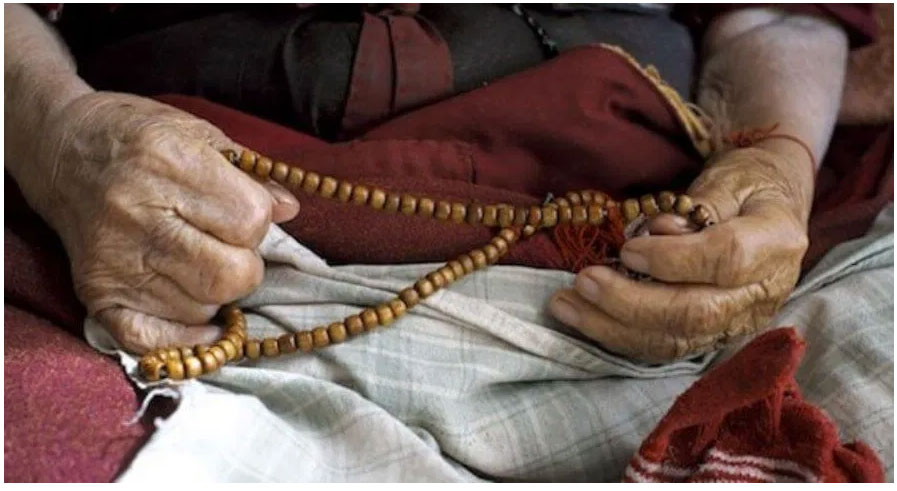
HOW TO CHOOSE A MALA BRACELET ?
Actually, there is no right or wrong way to choose a Tibetan bracelet. As you know, each of them has a particular meaning and it also depends on where you find them. Intuition also has an important role to play, as you will naturally be drawn to a bracelet that seems right for you rather than another.
Otherwise, you also have the option of choosing based on gemstones. Among the oldest prayer beads are the Rudrakshas. These beads are still called "Shiva's sacred tears". The seeds come from a tree that grows in India. Other traditional malas are also made of lotus seeds, Bodhi seeds, yak bone or wood.
Healing mala bracelets are made from gems with different colors, properties and energies. You will find some made of jade, black onyx, turquoise or quartz. And if you are doing work on your chakras, you may want to focus on color. For example, the Buddhist bracelet made of blue beads like turquoise is ideal for opening the throat chakra.
Whatever you choose, the Buddhist mala bracelet is a sacred object, so treat it with gentleness and respect. You can keep it with you throughout the day to help you be calm and positive. And you will be able to remember your intentions every time you touch or see it.
CONCLUSION
Much more than a simple piece of jewelry, the Mala bracelet is a tool at the heart of the Hindu and Buddhist tradition. It is nevertheless possible to use it in many ways beyond these different religious currents. These include the practice of yoga and meditation, not to mention its many energetic virtues. It is a very useful object in terms of development and surpassing oneself.
There are shorter malas made of 18, 27 or 54 beads. But the mala japa is generally made of 108 beads of the same size, crowned by a bigger bead called "guru bead". Some sacred texts refer to 9 beads, which requires 12 rounds of nine-bead mala in order to reach the 108 mantras. And even though it is usually the Buddhist bracelet that is supposed to choose you, you can take the first step by using your intuition as a guide.
